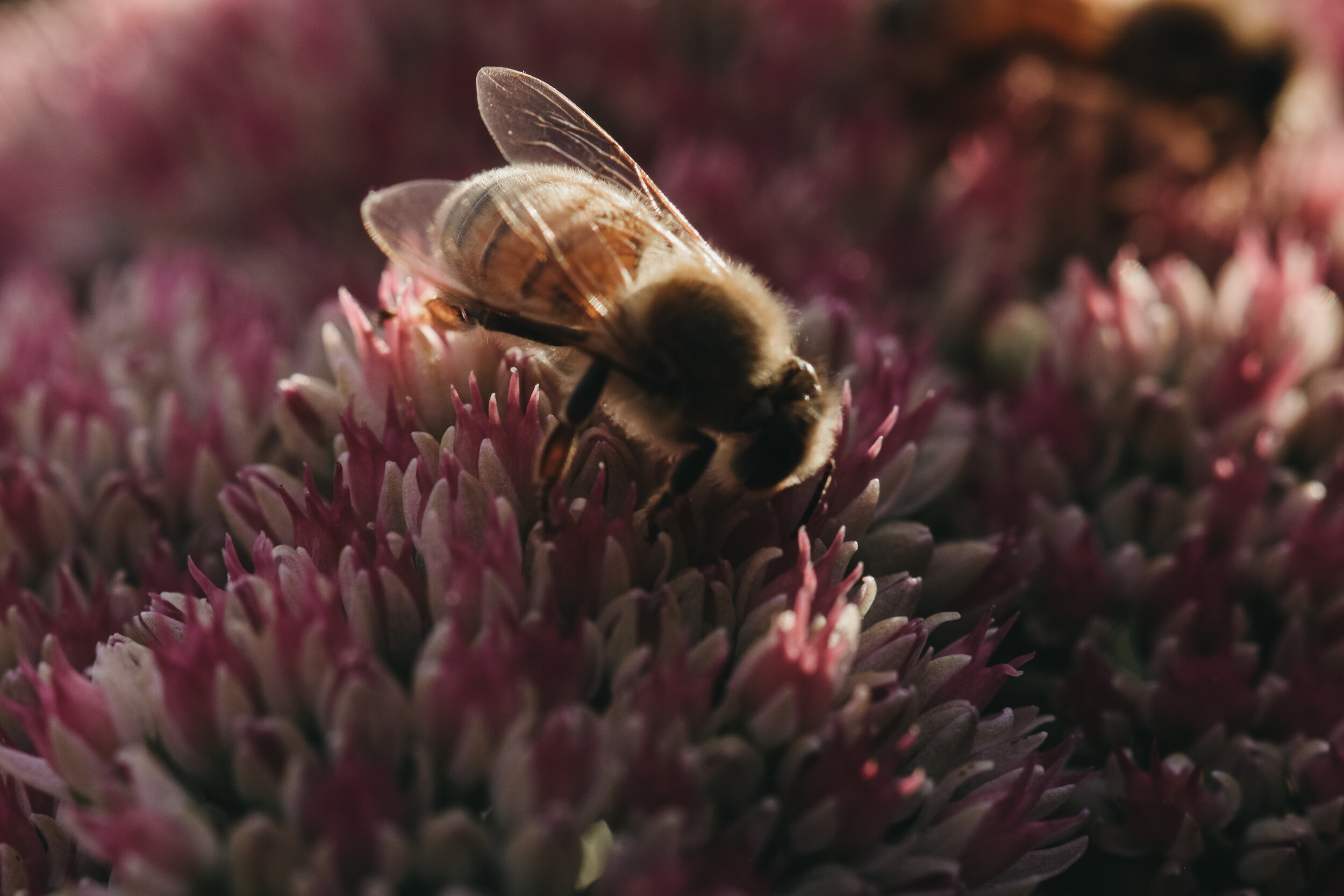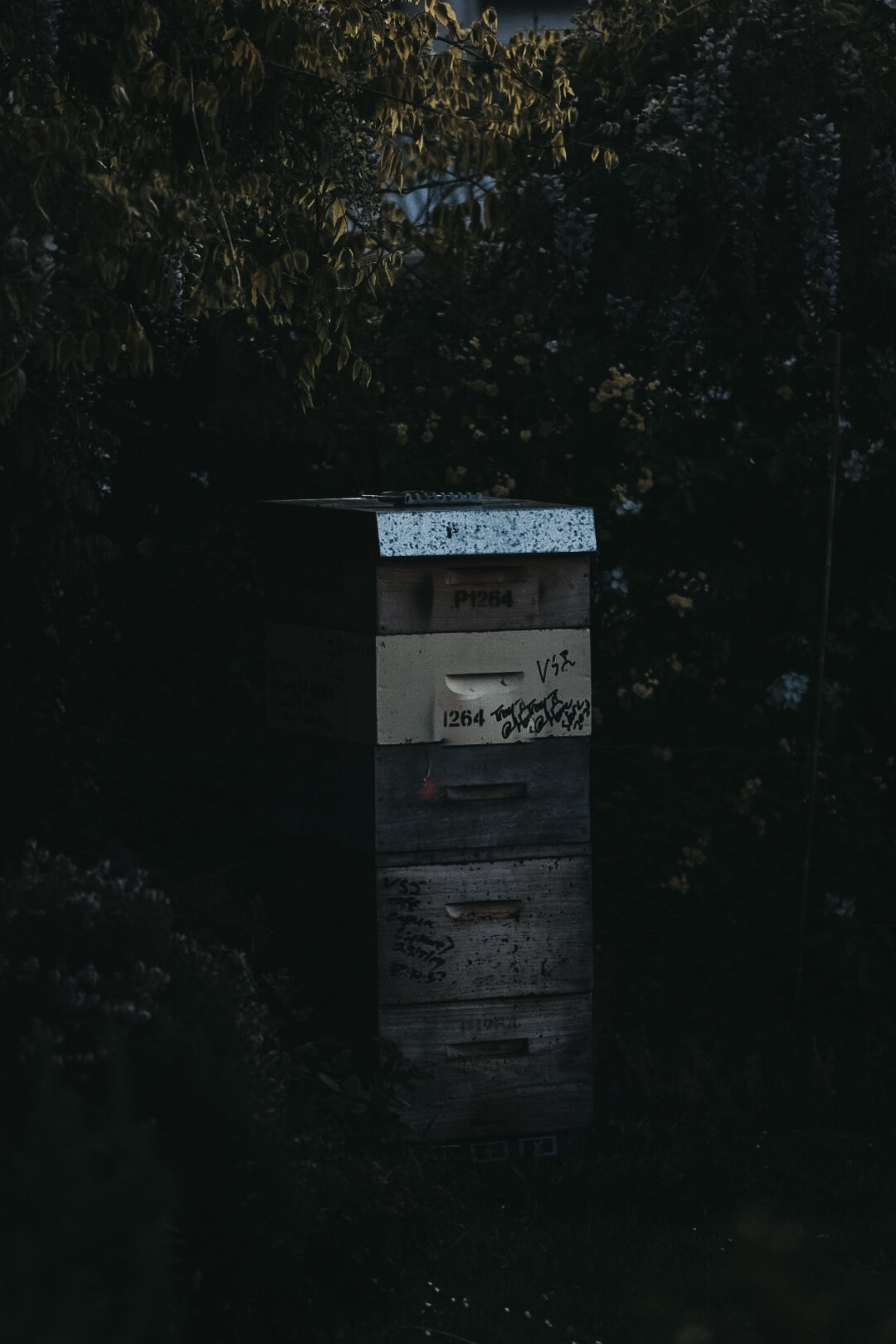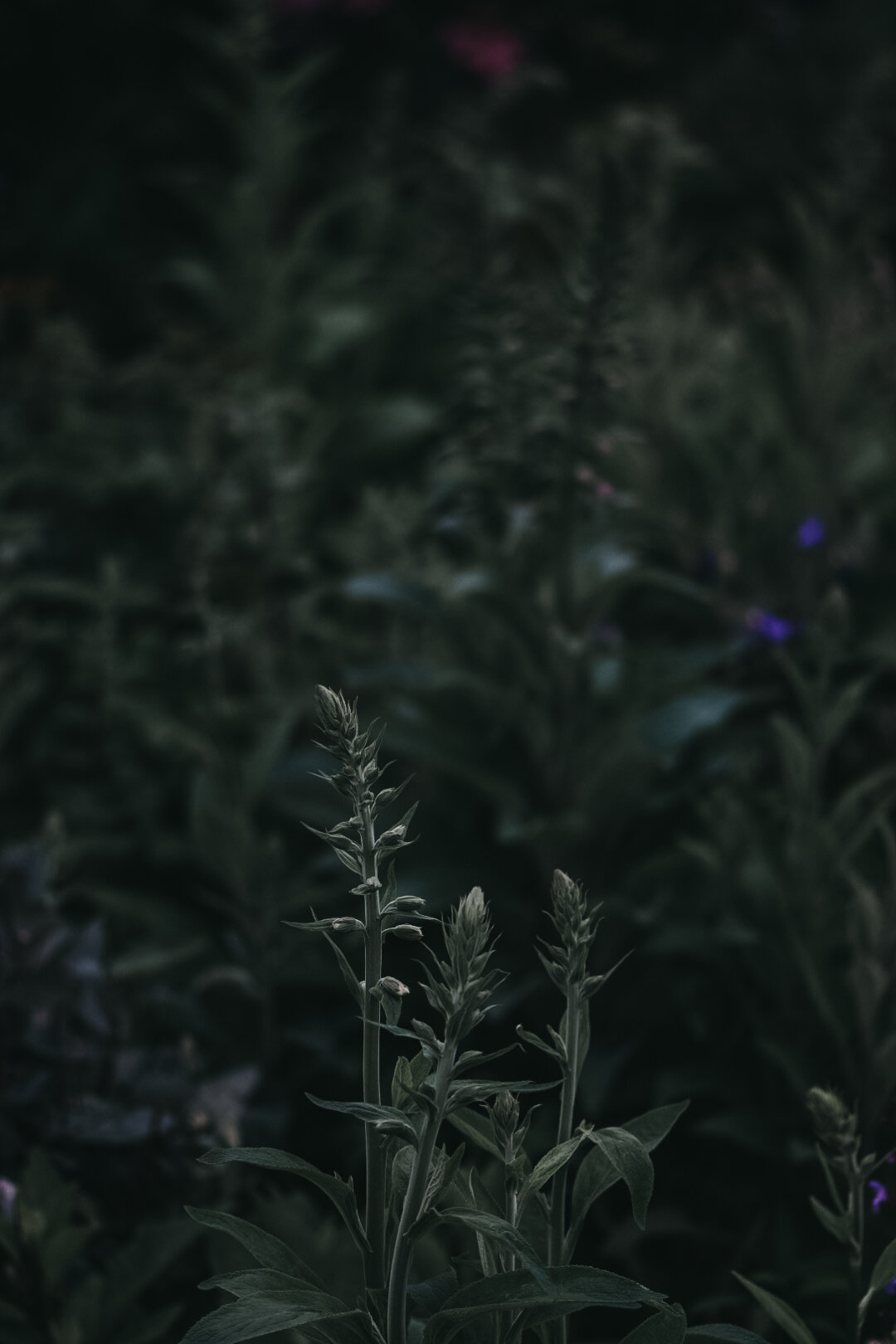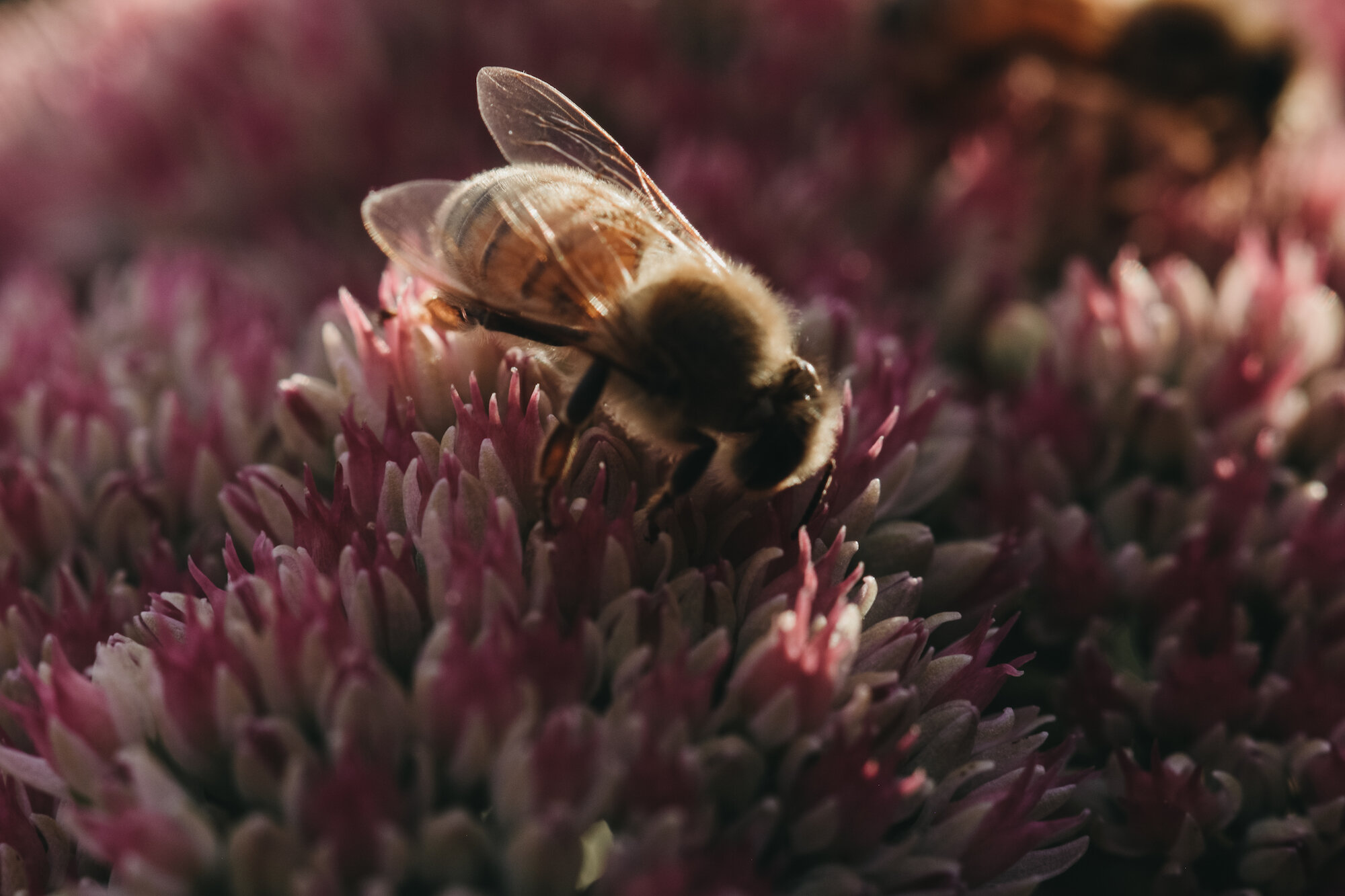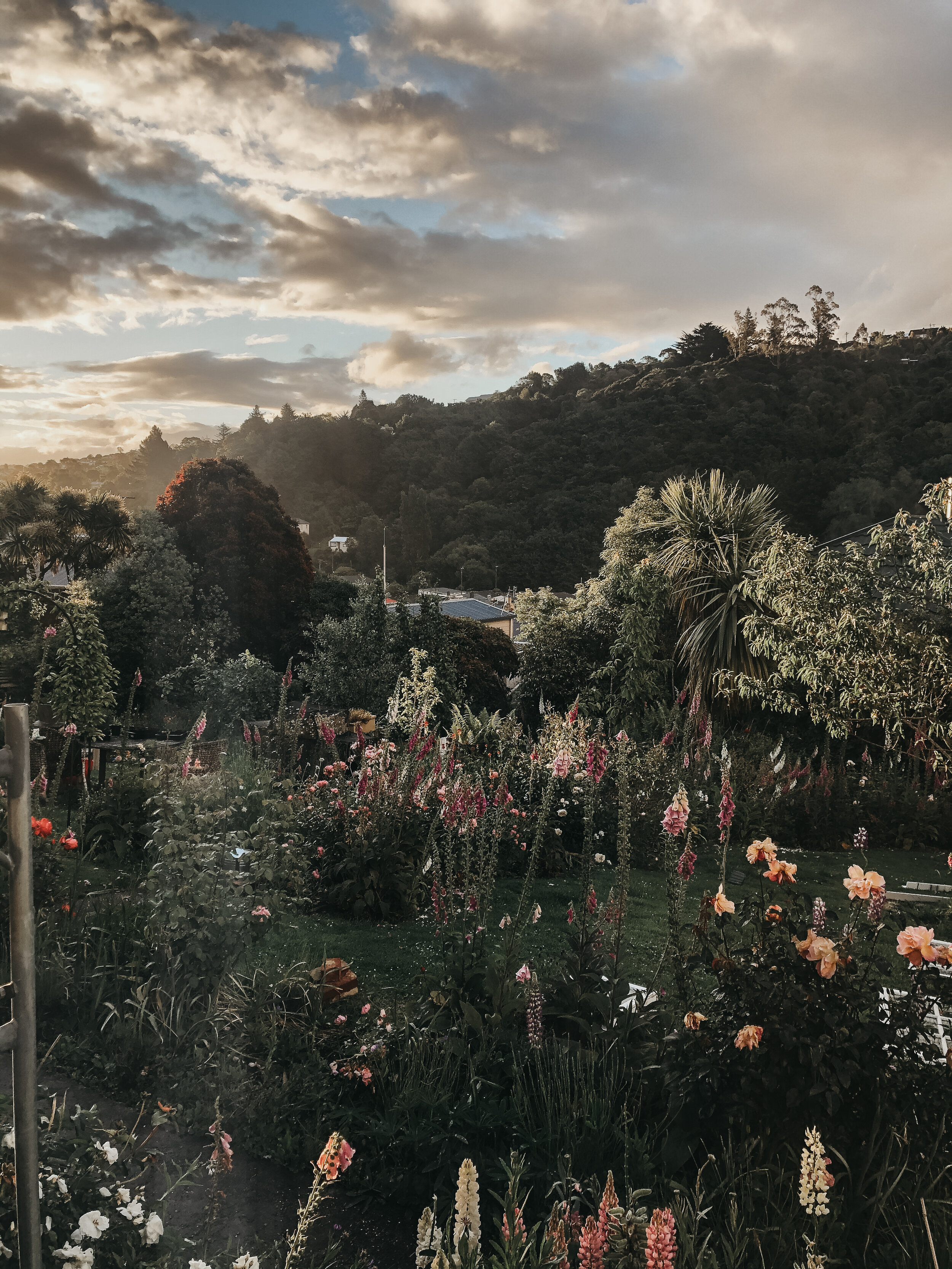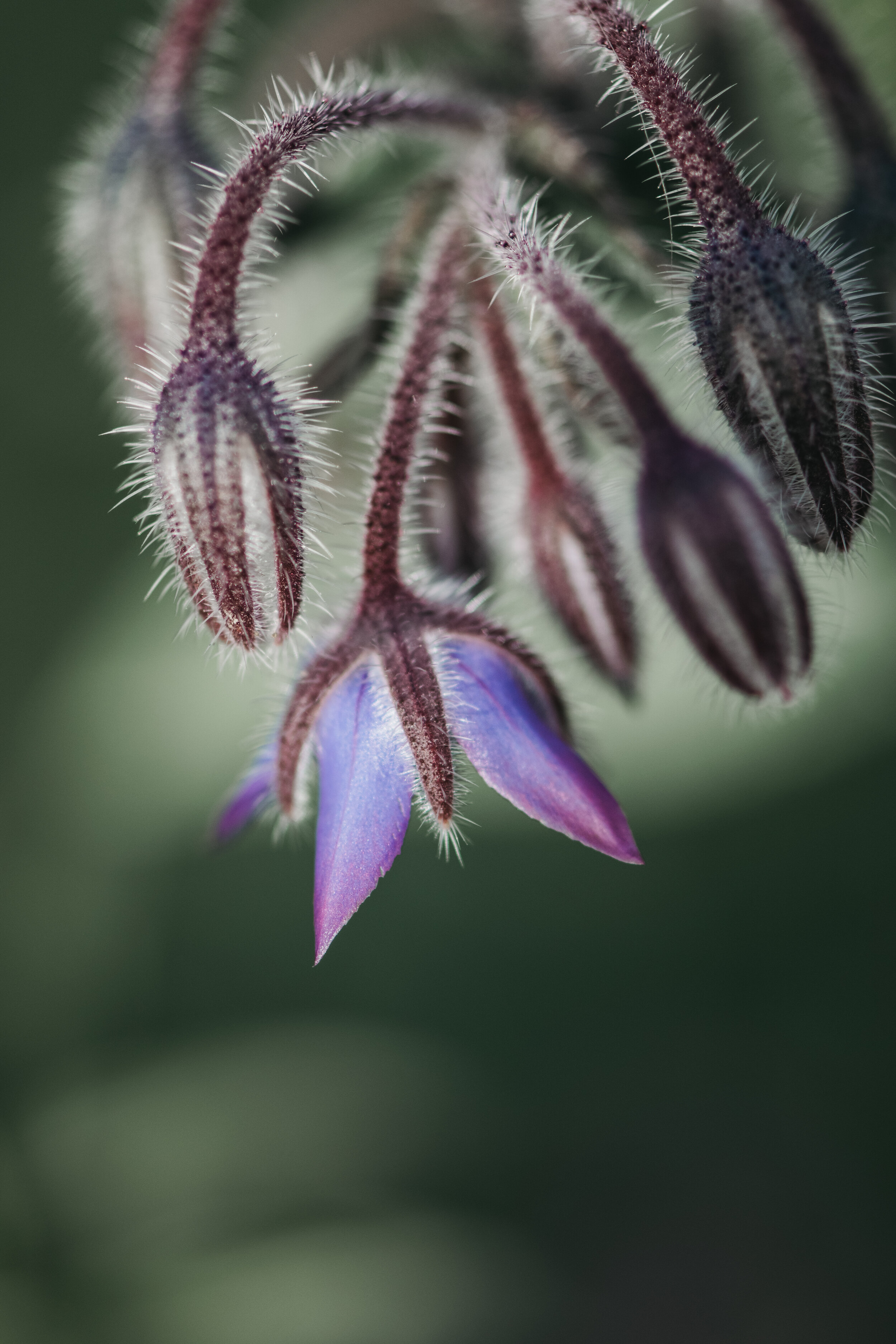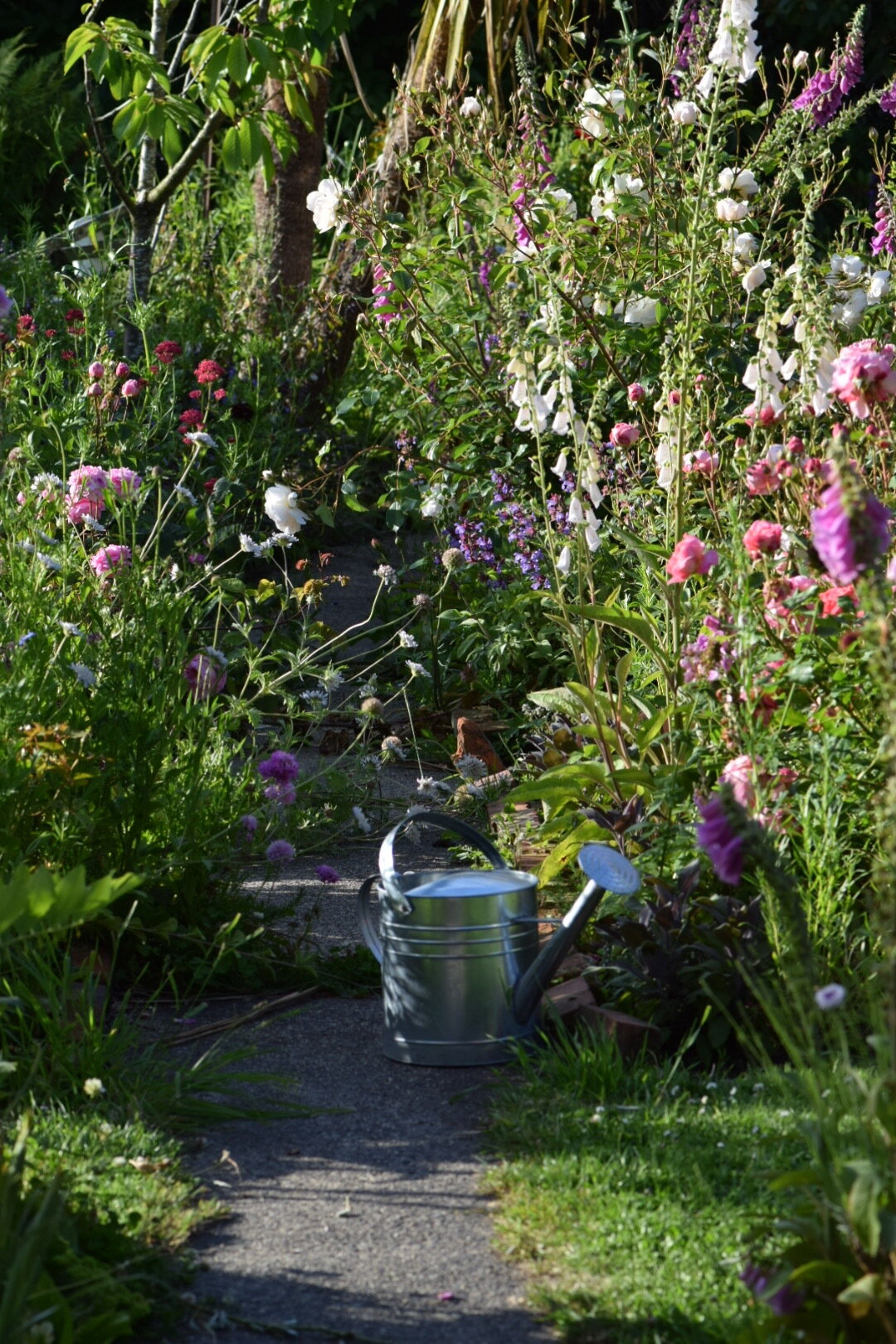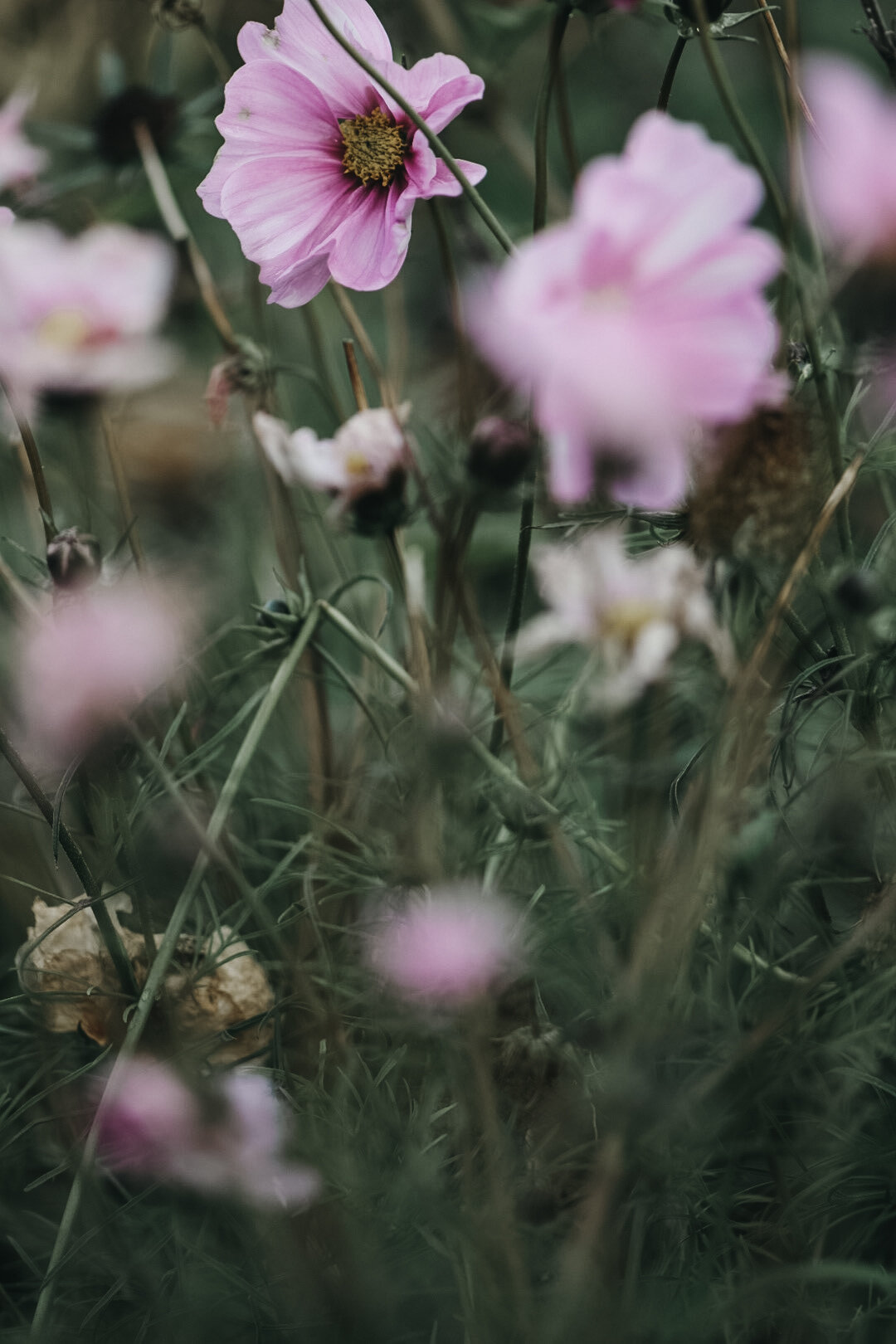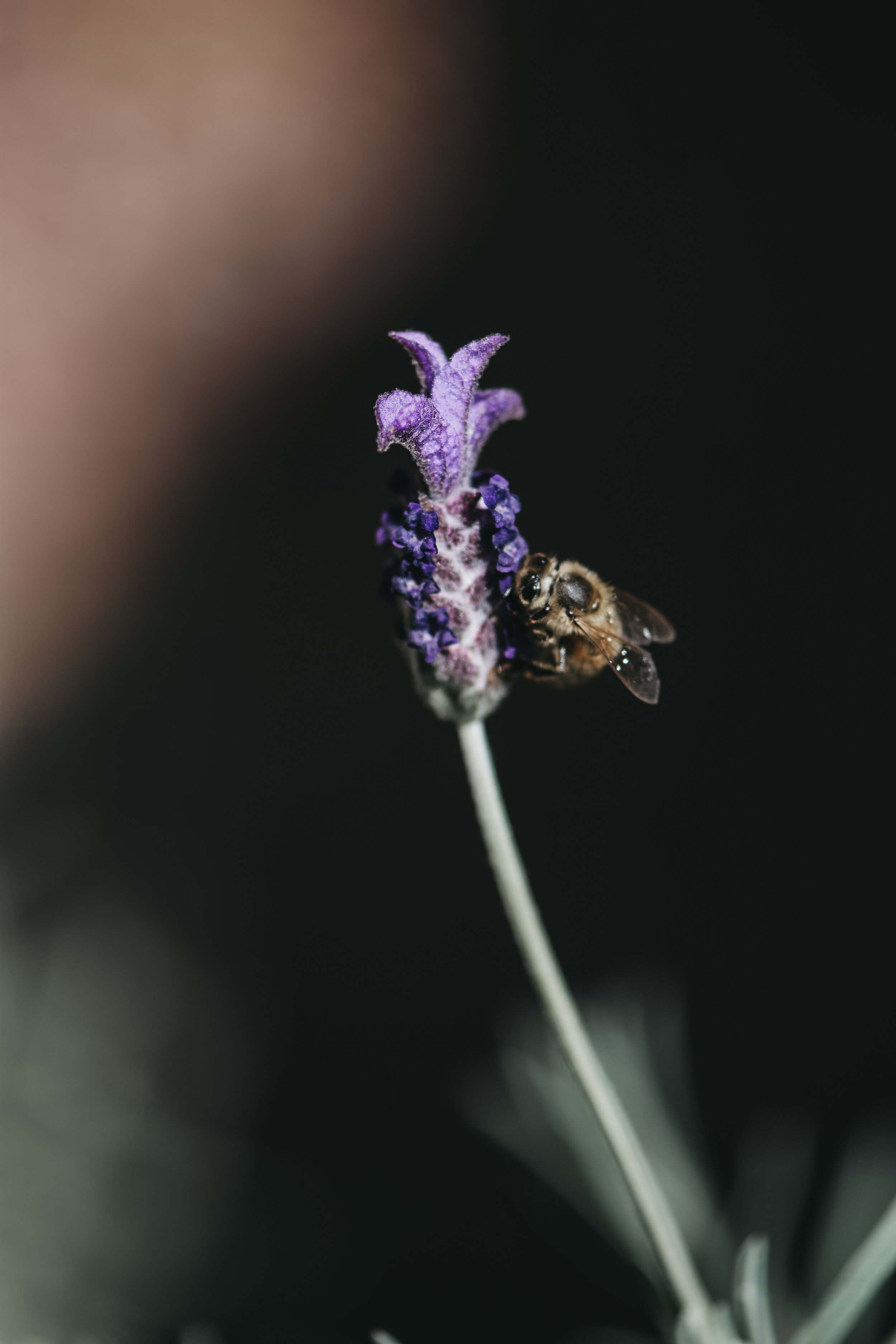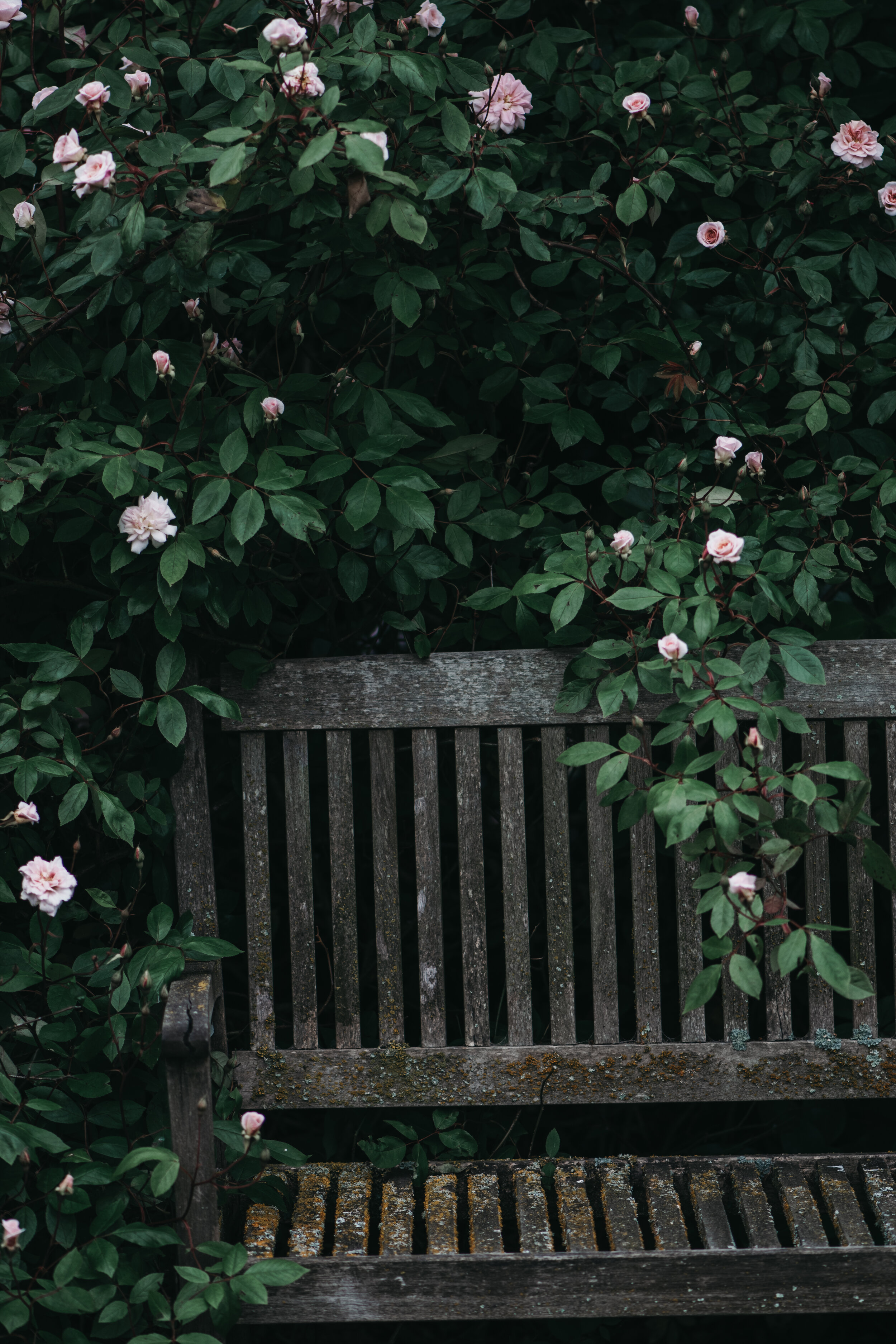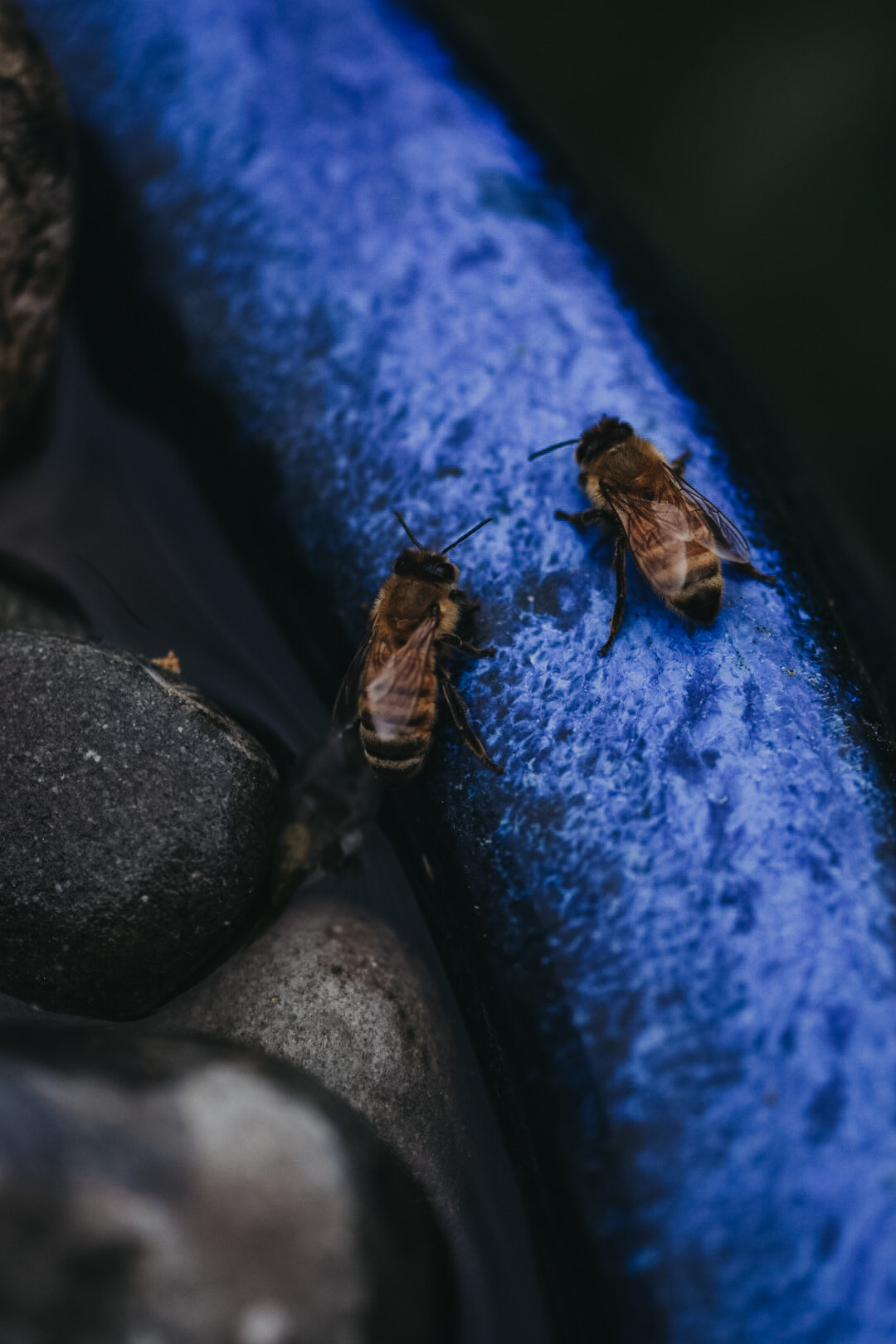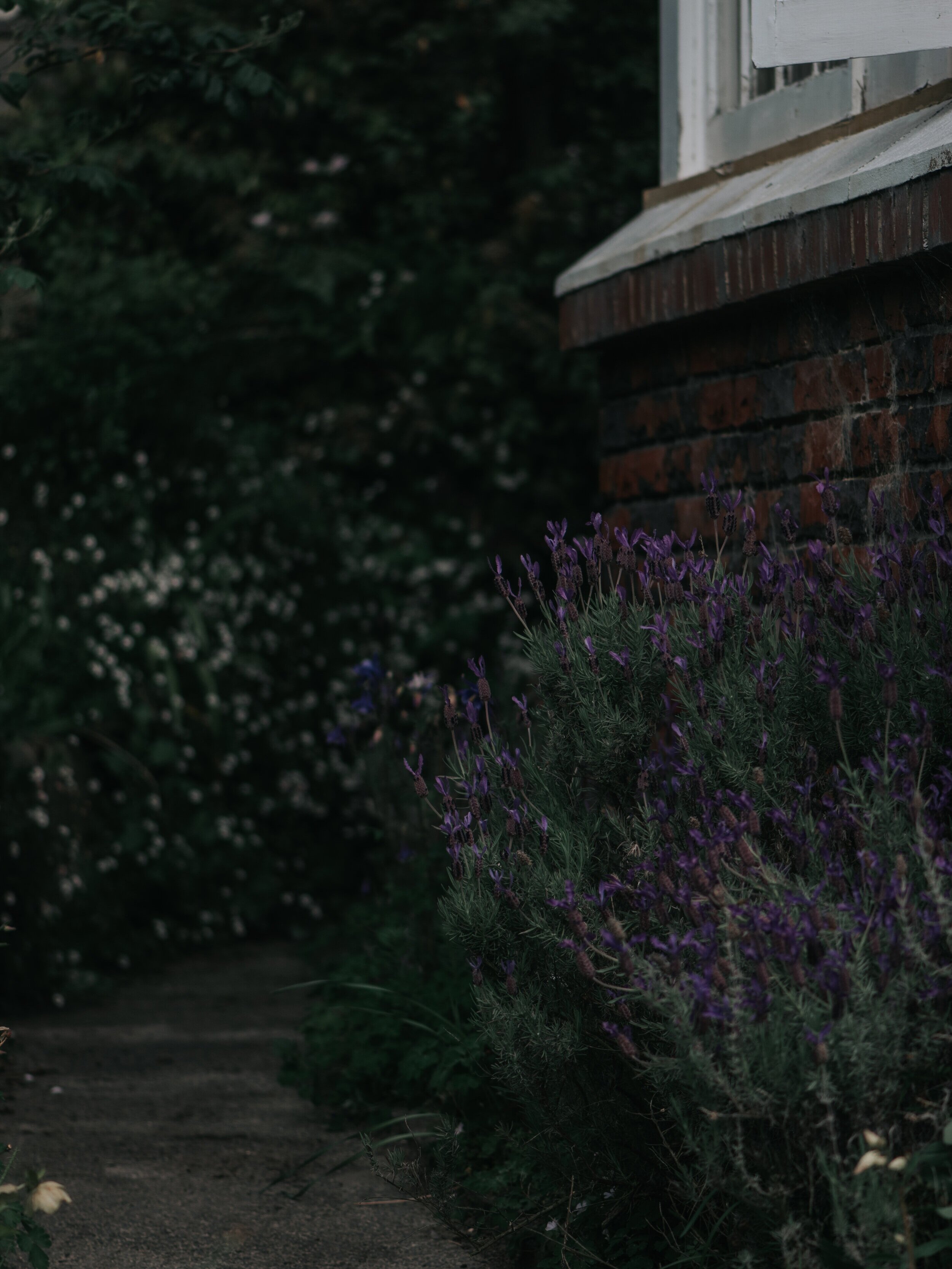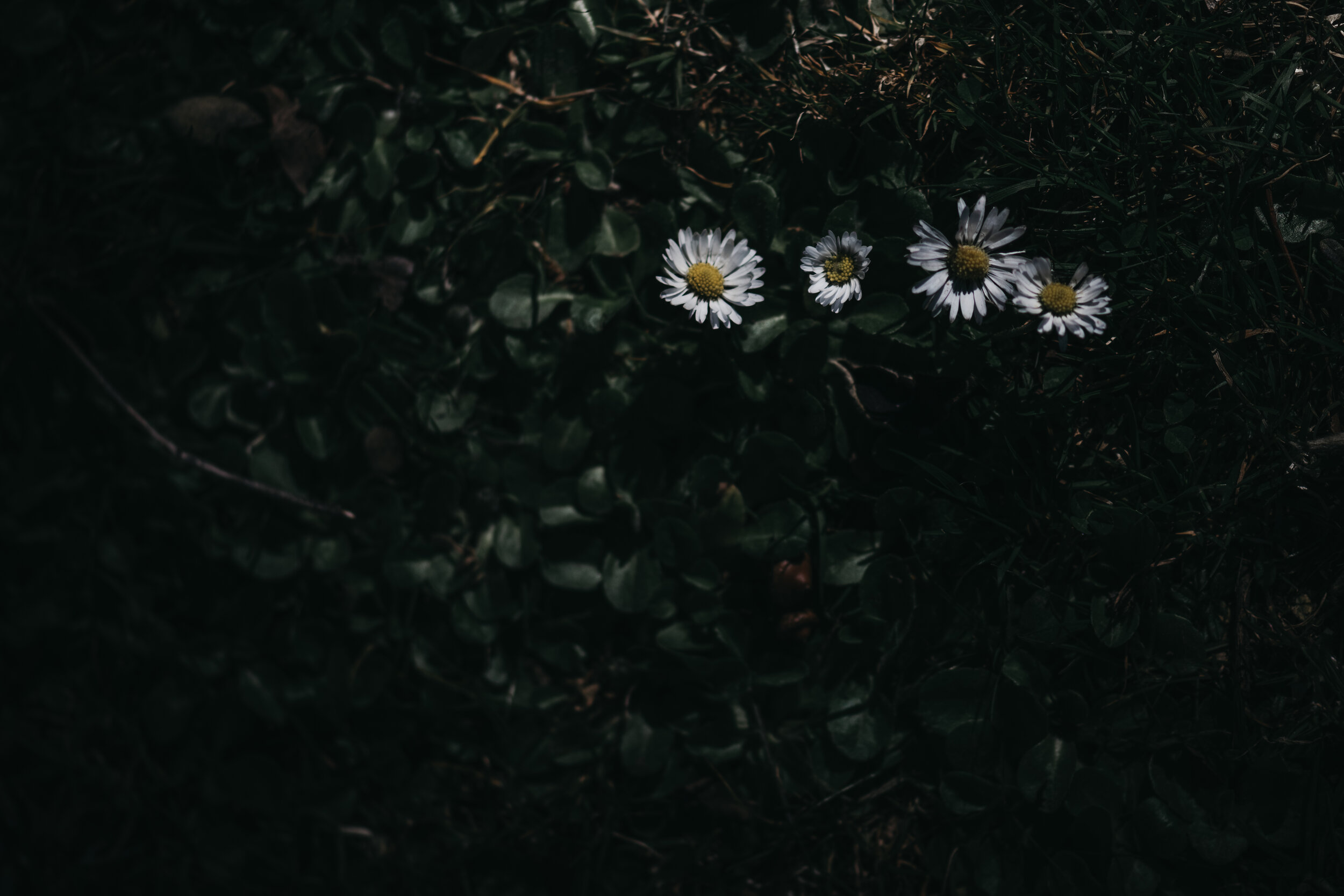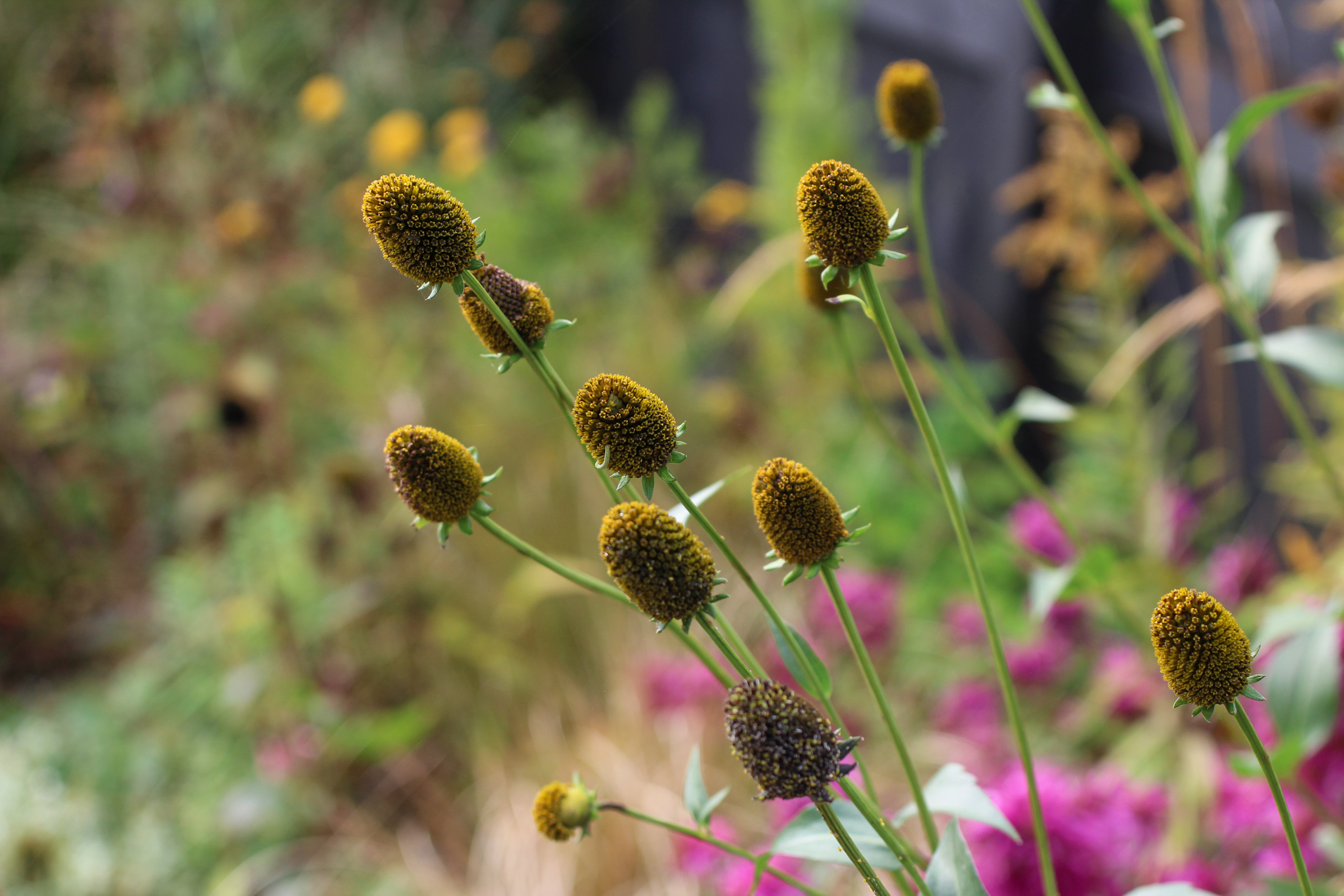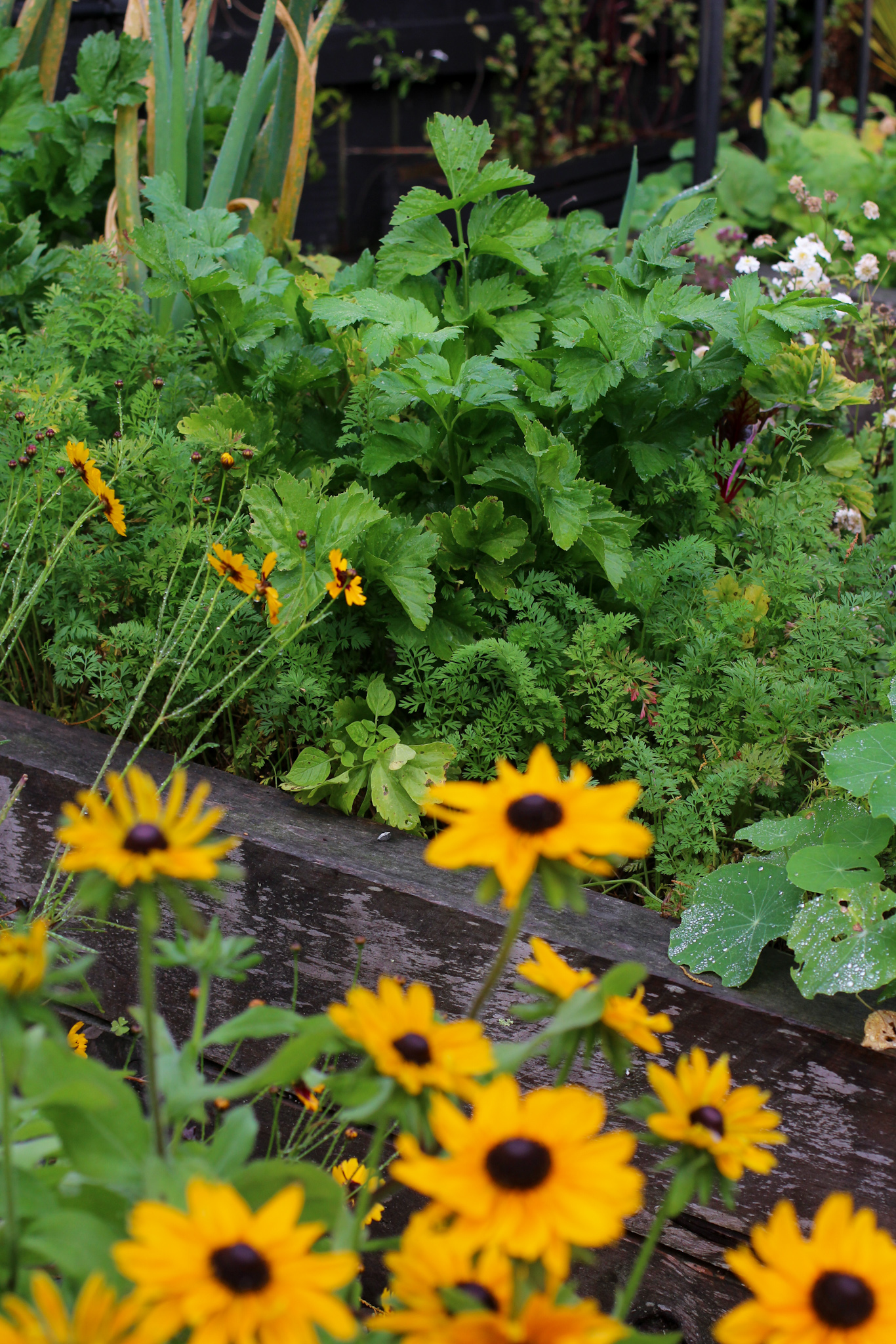A home garden is an increasingly important piece of the puzzle of our planet’s ecosystem. Creating a vibrant and nourishing place for bees and other beneficial insects is easy to do, and effective in even the smallest of spaces.
OVERVIEW — PLANTS FOR BEES & BENEFICIAL INSECTS
- Alyssum
- Bee balm
- Borage
- Calendula
- Catnip
- Chamomile
- Cleome
- Clover
- Cornflower
- Cosmos
- Dahlias
- Daisies
- Echinacea
- Echium
- Fennel
- Foxgloves
- Geranium
- Globe thistle (echinops)
- Lavender
- Lemon balm
- Marigolds
- Marjoram
- Nasturtiums
- Pennyroyal
- Phacelia
- Pineapple sage
- Poppies
- Sage
- Salvia
- Scabiosa (pincushions)
- Sea holly (eryngium)
- Roses
- Rosemary
- Tarragon
- Thyme
- Veronica (speedwell)
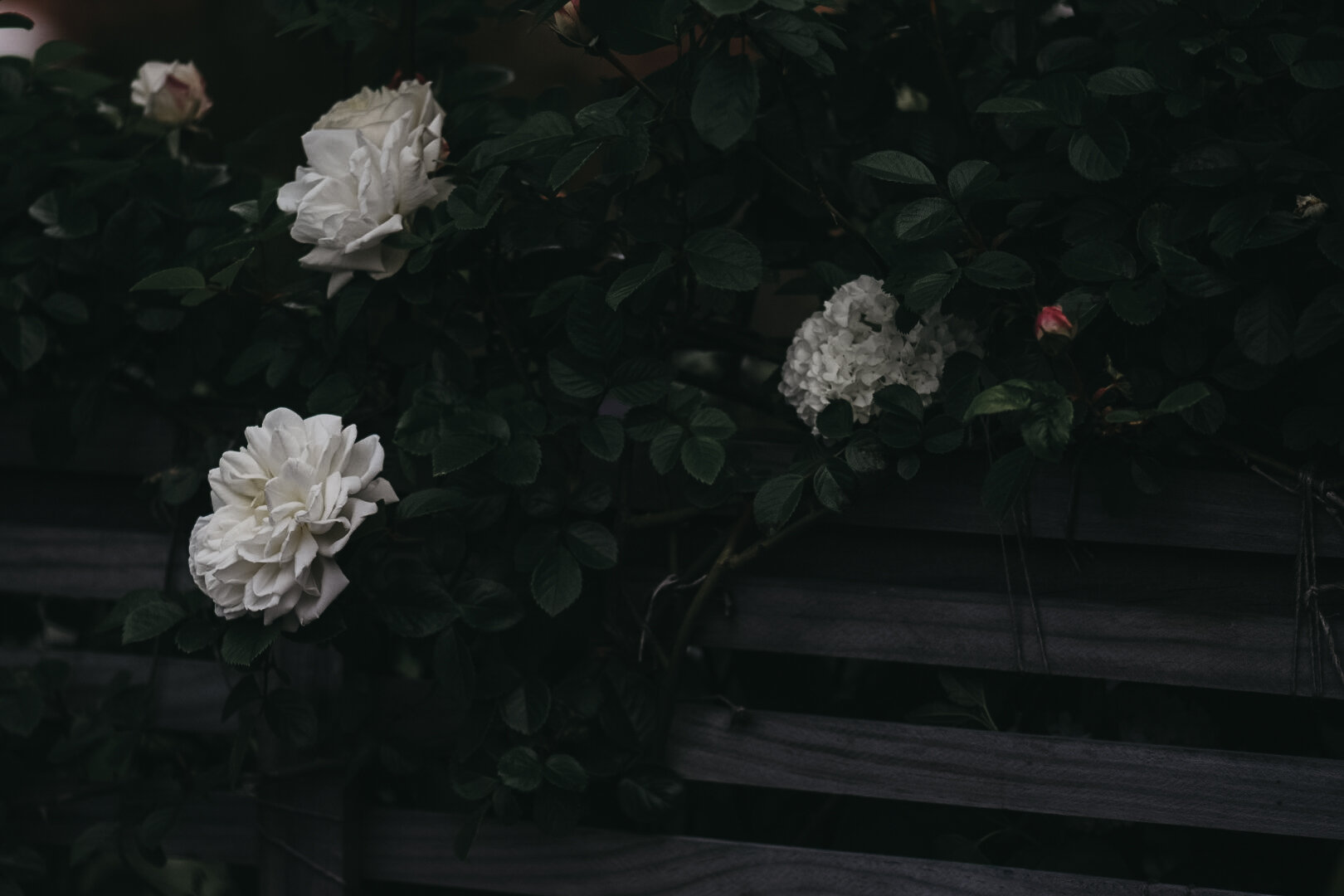
— Words by Melanie Adams
The other day I just sat in the garden. It’s something, like most gardeners, I don’t do often. As I sat and looked across flowerbeds and lawn, a lot of what I saw was motivated by the quiet hum I could hear coming from a corner of the garden.
Nestled near a very old and propped up apple tree (she is slowly collapsing with age) is our beehive. Much of what I do in the garden is designed to support “our girls” (the bees), as I attempt to build a pollination garden. One that helps feed the bees that we manage, but also one that builds a community for other insects and wildlife. A pollination pitstop so to speak.
This space over the years, as my knowledge and understanding grows, has quietly welcomed bumblebees, solitary bees, birds and other insects. It is a restful space as gardens tend to be, active with life and one I feel privileged to be part of. Having said this, my garden, it is not a conventional garden. I mash ideas and thoughts together, experimenting away in a manner that would no doubt have a more traditional gardener looking on in horror. And that is ok. I believe gardening is for everyone and by sharing my garden, I hope to encourage people to try something that is perhaps a little unconventional but will make a bee’s day a bit easier.
WHAT TO PLANT IN A POLLINATION GARDEN
HERBS
Herbs are something I have embraced with a full heart in the garden. I’ve liberated my herbs from the “herb garden” and they now live happily alongside roses and lavender in flower beds.
Herb foliage, such a sage, can provide excellent background to many an attractive bloom. And then for a certain time of year they take centre stage with an array of subtle but sweet flowers.
Borage is must for any bee friendly garden. I planted a few a number of years ago, having now self-seeded wherever — and I let them. I do find it amusing where they choose to make their home, and view them a little like foxgloves — they’re better garden designers than I, as they seem to know the exact spot to show off their beauty.
Bees love herbs such as lemon balm, fennel, bee balm, tarragon and marjoram. I leave the herbs to flower for the bees, chopping them back late in the season or harvesting them for drying.
Another herb I have welcomed in the garden is thyme. I’ve got different varieties sprinkled about the place, with creeping varieties providing wonderful ground cover, as does the herb chamomile.
EMBRACE “WEEDS”
Another ground cover plant I have embraced after years of battling it in the flower bed is clover. Clover is a cherished bee food. The white flower heads are a must for the honey bees, and purple clover growing under the current bushes, supporting the bumblebees. In the lawn, I let it run with clover and don’t mow when it flowers. Daisies sprinkle the lawn as well. Naturally, it’s untreated and wonky looking but I would rather my lawn support living things than become a sterile perfect wasteland.
PLANT IN MULTIPLES
I try and plant, where space will allow, in groups of three and five. On a given day, bees tend to harvest just one type of flower for the nectar or pollen it needs. By grouping my bee friendly plants together, I save my bees time and energy as they can return to the same spot to forage rather than having to search for a new location for the same plant.
BLUE TONES
Bees see blue well so I have created beds which are filled with blue-toned flowers around our beehive. Again, the herbs appear prominently along with plants like catnip and pennyroyal sitting alongside salvias, cornflowers and veronica (speedwell). I’ve added the odd white lavender for contrast. Rosemary is a big favourite with the bees and is a good filler for the ultimate pollinator garden goal of having flowers for the bees all year round.
ANNUALS
Annuals such as scabiosa, cosmos and poppies are in the mix and are easy joyful flowers to add to a flower bed to encourage bees.
SINGLE BLOOM FLOWERS
I try to plant a lot of single bloom flowers (flowers that are easier for bees to access). I’ve been directing my purchasing of any new roses to single flowering varieties, just like I have with dahlias. Single bloom roses provide an excellent source of pollen.
WATER
Near where the beehive lives is a bird bath. While the foraging plants in this bed are important, perhaps the bird bath is of most value. Water is a vital part of hive life. It is used to maintain the hive temperature at a comfortable 34-35 degrees centigrade, and to make food for the next generation. I’ve placed a collection of stones in the bottom of the bird bath so that the bees have somewhere to rest and safely drink from. My heart delights at sight of a bee or two pausing for a drink.
As the evening sun fades, slowly everything becomes still and quiet. Birds in the trees chatter away to each other, recounting their days. To sit and see life in my garden is something I treasure. It may be messy and overgrown, perhaps a bit weedy with dandelion flowers nodding in the evening breeze. But it has a story.
I believe each garden is unique to the gardener that creates it and for me creating a space that encourages my bees and fellow pollinators to blossom and grow has been a rewarding experience. I feel, even on a very small scale, that I am doing something to help the earth and its creatures breathe a little easier and in a way, it helps me breathe easier too.

